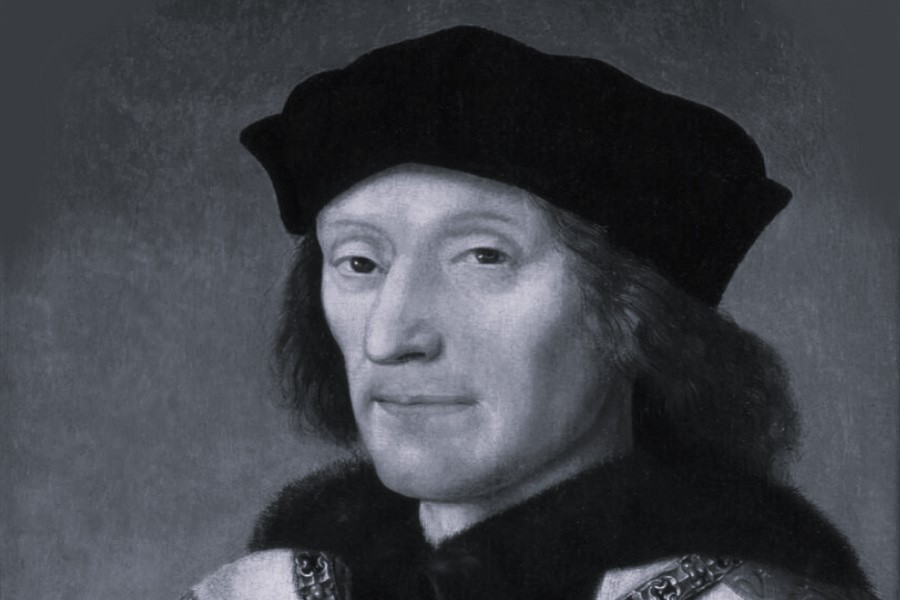The end of the Middle Ages?
The Battle of Bosworth Field, on Saturday, 22 August 1485, has often been taken as marking not only the end of the Wars of the Roses but also the close of the Middle Ages in England. It saw the defeat of the Yorkist King Richard III by Henry Tudor, and the beginning of the Tudor dynasty which would rule England until the death of Elizabeth I in 1603. The establishment of this “new monarchy,” it has been claimed, was associated with the start of a new era in English history, lasting for roughly the next three centuries and sometimes called the early modern period. But was this battle really as decisive a moment as some historians have argued?
Certainly, some historians have suggested that regnal years and changes of dynasty have severe limitations as markers of the transition from one historical age to another. The underlying structures of politics, government, society and economy moved too slowly, especially in the pre-modern world, for the replacement of one monarch by another to alter things decisively overnight.
In the case of Henry VII, historians have also argued that many of his alleged innovations in government – especially in controlling finances through the royal household – had already been anticipated by Edward IV and Richard III. Henry was thus less of an innovator than had often been claimed. Rather, he should be judged as a medieval monarch, and not a very good one at that because, unlike his most successful predecessors, he undervalued the importance of forging good relations with his nobility. Has the Battle of Bosworth Field correspondingly been over-rated as a turning-point? Does its fame rest largely on the drama of the battle as portrayed in Shakespeare’s Richard III, with Richard shouting “a horse, a horse; my kingdom for a horse!” and Henry finding the crown on a hawthorn bush after the battle? And has that fame only been reinforced in our own time by the discovery of Richard’s remains beneath a Leicester carpark in September 2012?
In fact, as so often in history, it seems likely that the truth lies between the two extreme interpretations. Henry VII’s monarchy may not have been as radically new as some earlier historians claimed, but equally it did see some significant changes. Henry did push the collection of royal revenues harder and more systematically than his Yorkist predecessors had done. He did clip the wings of the nobles by the Statute of Livery and Maintenance (1487) which curtailed their capacity to maintain private armies. And he did place senior government offices in the hands of “new men,” individuals of non-noble background who rose to eminence through their own ability via careers in the Church (such as Cardinal John Morton, who served as both Lord Chancellor and Archbishop of Canterbury) or in the law (like Reginald Bray, Richard Empson and Edmund Dudley). This broadened the base of Henry’s government considerably and made the monarchy less dependent on the goodwill of the nobility.
Henry never forgot that he owed his victory at Bosworth very largely to the defection of the Stanleys – the Earl of Derby and his younger brother – and their followers from Richard’s side to his own. He was determined to reduce the capacity of nobles to act as kingmakers who could make or break monarchs. In the fifteenth century that had been entirely possible, as the remarkable career of Warwick “the Kingmaker” (1428-71) spectacularly showed; by the sixteenth century it no longer was.
Perhaps Henry’s most important achievement was that he lived just long enough to leave behind an adult male heir, who became Henry VIII, by the time of his death. This was no mean achievement, and the legacies of some of his most apparently successful predecessors had been blighted by their failure to do this. Henry V and Edward IV had been highly effective rulers during their reigns, but their premature deaths left the Crown in the hands of children (Henry VI and Edward V respectively) and these royal minorities in turn generated much political instability. When Henry VII died in April 1509, his surviving son Henry was just a few weeks short of his eighteenth birthday, but close enough to be regarded as fully adult.
Henry VII’s reign thus marked a transition into a new era. He left behind a stable and secure monarchy, better financed and less dependent on the nobility, which was a firm platform on which Henry VIII could build. Henry VII was one of England’s least showy monarchs, but he was shrewd, dedicated and far-sighted, and he was able to see off the rebellions of pretenders to his throne in the form of Lambert Simnel (1487) and Perkin Warbeck (1497). He was also able to work very efficiently with Parliaments, and his reign saw a growing understanding that monarchs were most powerful when working with Parliaments rather than alone. Henry VIII’s comment in 1542 that “we at no time stand so highly in our estate royal as in time of Parliament” would not have been possible without the groundwork laid down during his father’s reign.
The reign of Henry VII thus has a liminal quality, marking the transition from one world to another, from the medieval to the early modern. The Battle of Bosworth Field did not change things overnight. Not everything that Henry did was innovatory, but his strengthening of royal finances and his reduction of the power of the nobility did mark a new direction of travel which his Tudor successors continued with confidence. This is what gives the Battle of Bosworth Field its continuing interest and significance, and supports its claim to be a decisive moment in English history. For it unlikely that any of those Tudor achievements could have happened during the sixteenth century without Henry’s victory on that fateful afternoon in Leicestershire in August 1485.







